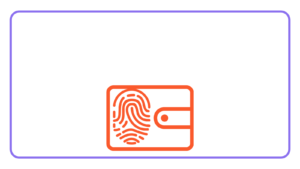If we could play a game of taking a shot (of water, of course) every time we heard the term “crypto” this year, we would be very..umm..hydrated by now.
Most people have heard of crypto and cryptocurrencies by now and know someone who has either invested in them or believes they are scams.
No matter what side you’re on, this cryptocurrency explainer will help you understand:
What is cryptocurrency?
Cryptocurrency is a digital or virtual currency that is created and stored electronically. It can be transferred digitally and used to buy goods and services.
In functionality, it is similar to other payment methods we use.
But one main difference is that cryptocurrencies are decentralized, which means no government or central authority controls them.
Cryptocurrency transactions are recorded in blocks linked to past transactions in a chain. This technology is known as Blockchain.
It is a digital ledger that records information in code that is impossible to change or hack. Several copies of the ledger are distributed across many computer systems, making it easy to verify.
Imagine it as a book where you enter every transaction.
Each cryptocurrency user has a copy of this book, creating a unified transaction history.
How did cryptocurrency start?
Satoshi Nakamoto, a pseudonymous person or group, published a white paper in October 2008 describing a new system of electronic cash called bitcoin.
The following year, Bitcoin was released to the public, and people began mining and trading the currency.
By late 2010, similar cryptocurrencies started appearing as users started noticing some shortcomings in Bitcoin.
They decided to create alternative coins or altcoins for better speed, security, anonymity, etc. Litecoin was among the first altcoins.
WordPress was the first big player to accept Bitcoin payments. Microsoft and Tesla followed soon after. Many merchants now accept it as a legitimate form of payment.
There are over 8,000 cryptocurrencies currently in existence.
How is a cryptocurrency created?
A process known as mining creates new coins whenever transactions are confirmed.
However, while many coins such as Bitcoin and Ethereum use mining, not every cryptocurrency uses it.
Coins can also be created in other ways. A cryptocurrency’s code defines how coins are created.
How to buy cryptocurrency?
There are typically three steps involved in buying cryptocurrency.
- Choosing a crypto exchange
- Funding your account
- Placing an order
Crypto exchanges allow you to buy and sell cryptocurrencies.
Exchanges let you swap one crypto for another – like Bitcoin for Litecoin – or buy crypto with regular currency, like the USD.
Coinbase and Binance are very well-known crypto exchanges.
The important thing is to know the deposit, withdrawal, and trading charges on an exchange.
Next, you have to add money to your account.
Most exchanges allow purchases with any government-issued currency or debit or credit cards, but this can vary depending on the platform.
Given the volatility of cryptocurrencies, most credit card companies do not support crypto purchases.
Finally, the order can be placed through the exchange’s web or mobile app.
All you have to do is choose the order type, enter the amount you want to purchase, and confirm your order.
The exact process applies to selling crypto too.
How to store cryptocurrency?
After purchasing crypto, comes the step of storing it. You cannot keep it in your traditional bank account, so there are specialized wallets for storing crypto called crypto wallets.
Some exchanges provide wallet services to store your crypto money through them easily.
There are two kinds of wallets; hot and cold.
Hot wallets use online software to protect the private keys to your cryptocurrency, and they don’t charge any fee.
Cold wallets or hardware wallets, on the other hand, have offline electronic devices that store the keys. These are paid, unlike hot wallets.
Should you buy cryptocurrency?
From an investment perspective, crypto can be a promising opportunity. There are some pros and cons that you can consider before deciding if this investment is for you.
Pros
- easy accessibility
- diverse portfolio, you can invest in different currencies at the same time
- user anonymity
Cons
- volatility
- some projects may fail
- no government regulations
Cryptocurrency in Pakistan
A lot of people are getting into crypto in Pakistan. Thanks to Facebook groups and a multitude of YouTube videos on the topic.
Banks and payment processors cannot deal in cryptocurrencies as per the SBP regulations. Individual usage is not yet banned, but the boundaries are tricky.
Crypto trading apps have also not been approved by the regulators.
The State Bank recently submitted a report to Sindh High Court proposing a ban on cryptocurrencies.
The report terms cryptocurrency as “illegal and not tradeable.”
Next, the law and finance ministries will be determining if a ban can be legally implemented under the country’s law.
A tentative hearing has been scheduled for April regarding the matter.
The future of cryptocurrency in the country is uncertain. But a ban would be unfortunate for the digital future of Pakistan, especially when the rest of the world is moving to legalize digital currencies.
To sum it up…
Cryptocurrency is not a fad. And neither is the underline technology that powers it – the Blockchain.
Crypto is one of many use cases for Blockchain. Other being NFTs, also in the news lately for bored apes.
Many smart people are working to make cryptocurrencies as ubiquitous as FIAT. And yes, the space is plagued with bad characters.
But crypto is the internet’s native currency. There’s no denying that.







